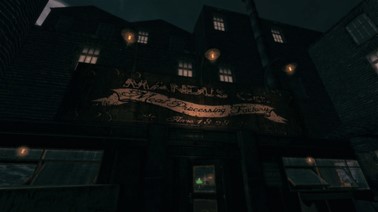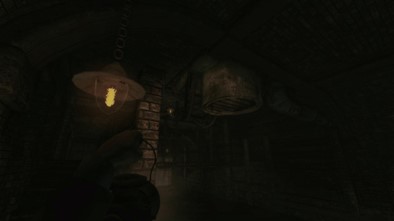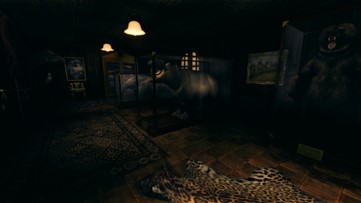I love horror games. If I’m not addicted to some other random game, my default setting is creepy and I’m probably playing one of the numerous horror titles in my Steam library.
That being said, I was kind of putting off playing Amnesia: A Machine for Pigs because I thought it was unlikely it would live up to its predecessor, The Dark Descent. I recently forced myself to play it despite my reservations.
Was I right about the game? I’ll tell you that and more in this Amnesia: A Machine for Pigs review.
Intro to Amnesia: A Machine for Pigs

So, what is Amnesia: A Machine for Pigs? As you might have guessed, it’s a sequel to the legendary Amnesia: the Dark Descent…sort of.
I guess it’s more a of a spiritual successor than anything. At first, there seems to be little, if any, connections between this game and The Dark Descent.
You’re playing as Oswald Mandus, a rich businessman in the Industrial Period. Given that he wakes up in a bed with a cage around it, you quickly realize that all is not as it seems in his opulent life.
As you stumble around your mansion in search of your missing children, you start to discover disturbing things about Mandus’s butchering company. Are those pig monsters in his basement? Do these pig monster have human parts?
In short, yes to both those questions. But I won’t tell you much more than that, in case you decide you want to play it.
Read Next: Transient Review: My Unrefined Impressions
Amnesia: A Machine for Pigs Review
Now, let’s get to the review portion of my article. I’ll be discussing several different aspects of the game:
- Story
- Gameplay
- Soundtrack
- Characters
- Visuals
Story
I touched on the story of the game briefly in the introduction. You are Oswald Mandus, a rich tycoon who is has woken up in his seemingly empty mansion with the conviction to find his missing children.
This game falls prey to the same issues I have with other walking simulators. Namely that it relies on a lot of valuable exposition through collectible documents that you’re not guaranteed to find unless you meticulously explore every nook and cranny in the huge mansion.
However, enough of the exposition is given to you through random flashbacks that you can piece together a working understanding of the story even if you don’t find all Mandus’s journal entries. The bad news is that the story is somewhat convoluted.
I was left with questions at the end of the game. Worse yet, I felt underwhelmed by what I did understand.
At its core, A Machine for Pigs is a game that is supposed to be about the horrors of industrialization and how humanity can be lost with technological advancement. The punch of the story is softened by Mandus’s continued reliance on his technology and the twists are kind of predictable.
Gameplay

A Machine for Pigs plays a lot like The Dark Descent. It’s essentially a walking simulator where you have little more control than the ability to walk around and look at things. You cannot fight back, so your only option when you encounter a monster is to hide and hope it doesn’t find you.
One key difference here, though, is that A Machine for Pigs is even more pared-down than The Dark Descent. You have the lantern to worry about refilling in the latter, and this aspect is totally done away with in A Machine for Pigs. Your lantern is now electric in the game.
Furthermore, you encounter a variety of different monsters in The Dark Descent that require you to do different things to escape. One that comes to mind is the water monster that attacks you if you step in the water it resides in. You don’t really see this same variety in A Machine for Pigs, so hiding from monsters feels largely monotonous.
Like I’ve said before, I don’t mind walking simulators, so the gameplay in general doesn’t bother me here. However, if you don’t like games where you’re powerless, you’ll want to skip this one.
Soundtrack
The music in A Machine for Pigs was fine. Like most games, I’m not sure I would say it’s particularly noticeable.
I gauge how much I like the soundtrack based on whether or not I choose to listen to it after the game or if I notice the music while I’m playing. If I don’t notice it at all, then it was a fairly neutral musical experience.
That’s precisely where A Machine for Pigs lies: in neutral territory here.
Characters
Characters are probably the first thing I notice about games. I’d be willing to bet it’s the same for you, if gameplay isn’t the most important quality.
That being said, I don’t think the characters are remarkable in A Machine for Pigs. You don’t really get to see any of them, and the world feels almost totally unpopulated.
Mandus is the only character that matters, and he’s little more than an empty vessel for you, the player, to occupy. I don’t think this is to the game’s detriment. It’s similar to its predecessor, The Dark Descent, in that way.
Read Next: Alien: Isolation Review
Visuals

How did the game look? Unlike other games I’ve reviewed like Transient or Alien: Isolation, A Machine for Pigs looks pretty dated.
That’s not surprising, given that it was released in 2013. However, I think even for that time, it looks surprisingly old. There are some aspects that almost look PS2-era in quality. See: the weird-looking texture on the jaguar rug pictured above.
But then there are other parts that look great. It’s kind of a mixed bag.
Plus, I had problems with frame rate drops randomly in the game. At the time of writing this, I have a fairly high-end PC, so it’s not a problem with my computer. Research also shows that many other players had this problem, as well.
Is Amnesia: A Machine for Pigs Worth Playing?
I feel somewhat guilty for saying this, but I don’t think Amnesia: A Machine for Pigs is worth your time. With the frame rate problems, outdated visuals, and unremarkable (and often pretentious) story, it’s something you should steer clear from unless you’re maybe the most dedicated fan of Frictional, the developer.
On top of all those other issues I mentioned, the game has an almost insultingly short playtime. It took me about five hours to beat, but I read numerous reports of players who managed to finish the game in as little as two or three hours.
If you’re dead set on playing the game, wait until it goes on sale. I don’t think you’re getting your money’s worth otherwise.
Read Next: Call of Cthulhu Review
Wrap Up
No game developer is perfect. Even the best ones produce duds now and again, and I feel like this is the case for Frictional when it comes to A Machine for Pigs.
That doesn’t mean I wouldn’t recommend their games overall to people. Soma is one of my favorite horror games, and The Dark Descent is undeniably a classic.
Don’t let one lackluster game deter you from their other offerings. I for one will continue to play their games in the future…unless they just start consistently making unimpressive titles, anyway.
